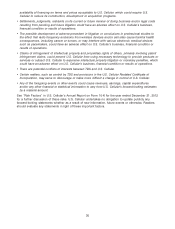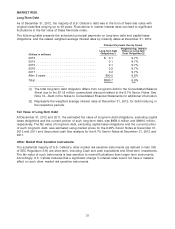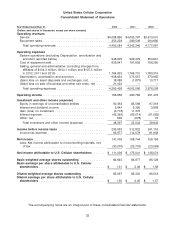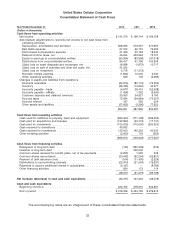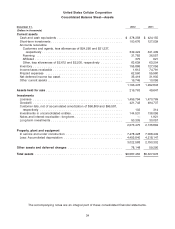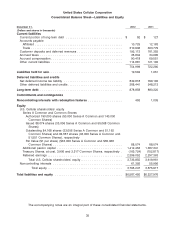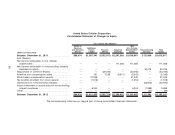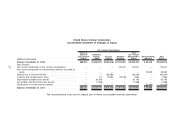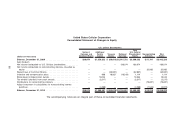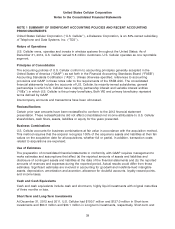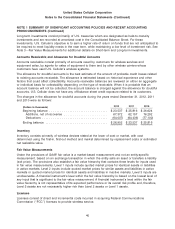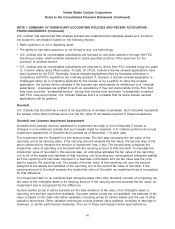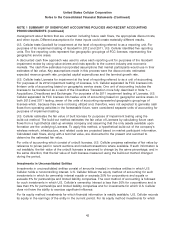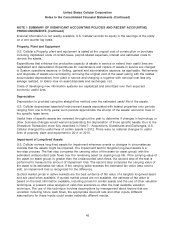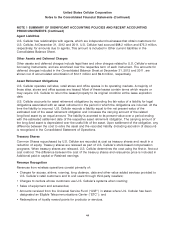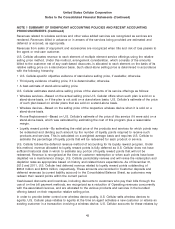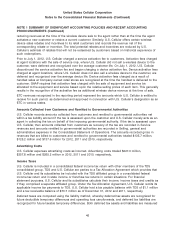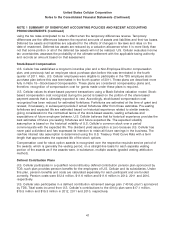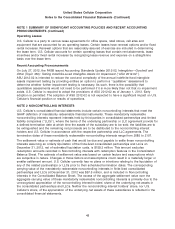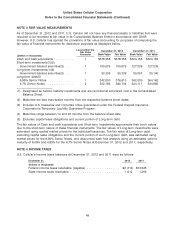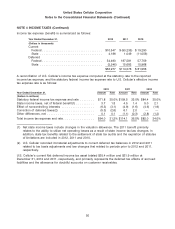US Cellular 2012 Annual Report Download - page 48
Download and view the complete annual report
Please find page 48 of the 2012 US Cellular annual report below. You can navigate through the pages in the report by either clicking on the pages listed below, or by using the keyword search tool below to find specific information within the annual report.
United States Cellular Corporation
Notes to the Consolidated Financial Statements (Continued)
NOTE 1 SUMMARY OF SIGNIFICANT ACCOUNTING POLICIES AND RECENT ACCOUNTING
PRONOUNCEMENTS (Continued)
Long-term investments consist primarily of U.S. treasuries which are designated as held-to-maturity
investments and are recorded at amortized cost in the Consolidated Balance Sheet. For these
investments, U.S. Cellular’s objective is to earn a higher rate of return on funds that are not anticipated to
be required to meet liquidity needs in the near term, while maintaining a low level of investment risk. See
Note 3—Fair Value Measurements for additional details on Short-term and Long-term investments.
Accounts Receivable and Allowance for Doubtful Accounts
Accounts receivable consist primarily of amounts owed by customers for wireless services and
equipment sales, by agents for sales of equipment to them and by other wireless carriers whose
customers have used U.S. Cellular’s wireless systems.
The allowance for doubtful accounts is the best estimate of the amount of probable credit losses related
to existing accounts receivable. The allowance is estimated based on historical experience and other
factors that could affect collectability. Accounts receivable balances are reviewed on either an aggregate
or individual basis for collectability depending on the type of receivable. When it is probable that an
account balance will not be collected, the account balance is charged against the allowance for doubtful
accounts. U.S. Cellular does not have any off-balance sheet credit exposure related to its customers.
The changes in the allowance for doubtful accounts during the years ended December 31, 2012, 2011
and 2010 were as follows:
2012 2011 2010
(Dollars in thousands)
Beginning balance ................................ $23,537 $ 25,816 $ 26,624
Additions, net of recoveries ........................ 67,372 62,157 76,292
Deductions .................................... (64,007) (64,436) (77,100)
Ending balance .................................. $26,902 $ 23,537 $ 25,816
Inventory
Inventory consists primarily of wireless devices stated at the lower of cost or market, with cost
determined using the first-in, first-out method and market determined by replacement costs or estimated
net realizable value.
Fair Value Measurements
Under the provisions of GAAP, fair value is a market-based measurement and not an entity-specific
measurement, based on an exchange transaction in which the entity sells an asset or transfers a liability
(exit price). The provisions also establish a fair value hierarchy that contains three levels for inputs used
in fair value measurements. Level 1 inputs include quoted market prices for identical assets or liabilities
in active markets. Level 2 inputs include quoted market prices for similar assets and liabilities in active
markets or quoted market prices for identical assets and liabilities in inactive markets. Level 3 inputs are
unobservable. A financial instrument’s level within the fair value hierarchy is based on the lowest level of
any input that is significant to the fair value measurement. A financial instrument’s level within the fair
value hierarchy is not representative of its expected performance or its overall risk profile and, therefore,
Level 3 assets are not necessarily higher risk than Level 2 assets or Level 1 assets.
Licenses
Licenses consist of direct and incremental costs incurred in acquiring Federal Communications
Commission (‘‘FCC’’) licenses to provide wireless service.
40


